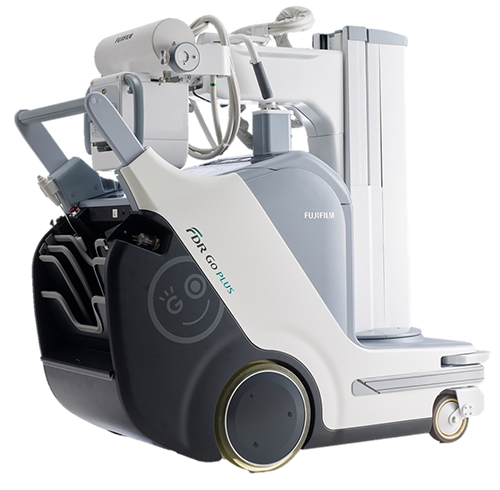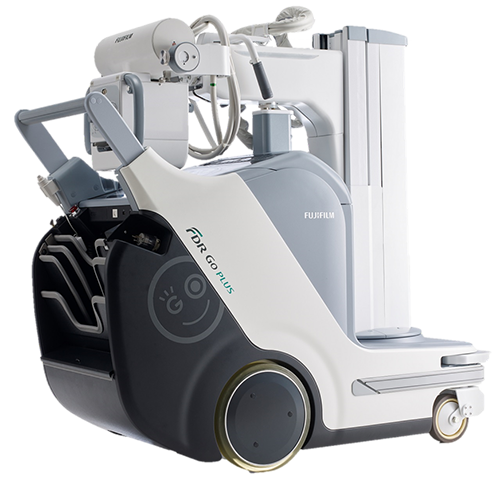Top Portable X-Ray Machines for Clinics in 2025
Table of Content
Portable X-ray machines have become indispensable for modern clinics. Their compact design and cutting-edge technology enable healthcare professionals to deliver accurate diagnoses even in challenging environments.
Finding the right portable X-ray machine can be a game-changer, especially for veterinarians working in remote areas. When I helped a friend in Turkey search for one suited to his fieldwork, I realized just how critical these compact diagnostic tools are.
They’re built to deliver reliable results even in the most challenging environments, and picking the right one requires careful consideration of features and use cases.
In this guide, we explore the best portable X-ray machines available in 2024, their benefits, use cases, and top models with detailed comparisons.
What Are Portable X-Ray Machines?
Portable X-ray machines are compact diagnostic tools designed to capture radiographic images in various environments.
Unlike stationary systems, these devices can be easily moved and operated in smaller spaces, making them ideal for clinics, mobile units, and fieldwork. They are widely used in outpatient clinics, emergency care, sports medicine, and home healthcare.
Benefits of Portable X-Ray Machines
- Flexibility: Easily transportable to various locations, such as patient rooms, remote clinics, or emergency sites.
- Cost-Effective: More affordable than full-sized systems, making them ideal for smaller facilities.
- Quick Diagnosis: Immediate imaging reduces patient wait times and accelerates treatment.
- Versatile Applications: Suitable for multiple medical specialties including orthopedics, pulmonology, dentistry, and veterinary care.
- Enhanced Patient Care: Enables on-site imaging, minimizing the need for patient transfers.
What Are Portable X-Ray Machines?
Portable X-ray machines are designed to take radiographic images in places where traditional, stationary machines aren’t practical. Their lightweight and mobile design makes them indispensable for outpatient clinics, sports medicine, emergency care, home healthcare, and veterinary practices—particularly in rural or remote settings.
Why They Matter
During my research, I found that portable X-ray machines stand out for several reasons:
- Mobility: Lightweight and easy to transport, they’re ideal for work in remote areas.
- Flexibility: These machines are suitable for human and animal diagnostics alike.
- Ease of Use: Simple interfaces allow quick and effective operation, even for less experienced users.
- Cost-Effectiveness: While not cheap, they’re a more affordable option compared to full-size systems without compromising on essential features.
Practical Use Cases
For my friend’s veterinary practice, the key requirements were:
- On-Site Diagnostics: The ability to detect fractures and injuries in animals without requiring clinic visits.
- Emergency Scenarios: Quick imaging in critical situations to aid rapid decision-making.
- Rugged Performance: Equipment that’s reliable and functional in less-than-ideal conditions, including areas with limited infrastructure.
Use Cases and Medical Specialties
- Pulmonology: Imaging for chest X-rays to detect lung conditions like pneumonia or tuberculosis.
- Dentistry: Capturing dental radiographs in mobile or compact dental clinics.
- Orthopedics: Diagnosing fractures and bone abnormalities in outpatient clinics or during emergencies.
- Veterinary Care: Portable systems like the MinXray are widely used in animal healthcare, including equine imaging.
- Emergency Medicine: Rapid imaging in ambulances or emergency departments for trauma cases.
- Home Healthcare: Useful for bedridden patients needing diagnostics at home.
Top Portable X-Ray Machines for 2024
1. Carestream DRX-Revolution Nano
By Carestream Health
Best For: Clinics on a budget that need reliable and portable imaging.
Pros:
- Ultralight design, ideal for confined spaces.
- High-quality images with minimal radiation exposure.
- Easy-to-use interface with quick setup.
- Affordable compared to high-end models.
Cons:
- Limited features for advanced imaging needs.
- Not ideal for high patient volume settings.
2. GE AMX 240
GE Healthcare
Best For: Clinics that prioritize high image quality and advanced connectivity.
Pros:
- Exceptional image quality.
- Compact and ergonomic design.
- Built-in wireless connectivity for easy image sharing.
- Long battery life, allowing extended operation.
Cons:
- Premium pricing may not suit smaller clinics.
- Maintenance costs can be higher than average.
3. Siemens Mobilett Elara Max
Siemens Healthineers
Best For: Facilities that need advanced imaging technology with efficient workflow integration.
Pros:
- Excellent maneuverability with lightweight design.
- High-resolution imaging with low radiation dose.
- Intuitive touchscreen interface.
- Seamless integration with PACS and HIS systems.
Cons:
- Limited battery backup compared to competitors.
- Requires regular software updates for optimal performance.
4. Fujifilm FDR Go PLUS
ظ

Fujifilm Healthcare
Best For: High-traffic clinics needing fast, reliable imaging.
Pros:
- Smooth, quiet operation for patient comfort.
- High-speed image processing.
- User-friendly controls with responsive touchscreen.
- Excellent service and support from Fujifilm.
Cons:
- Higher upfront cost.
- Slightly heavier than other models in its class.
5. Canon CXDI-810C Wireless
Canon Medical Systems
Pros:
- Compact and wireless for seamless mobility.
- Superior image clarity with advanced sensors.
- Durable design, resistant to daily wear and tear.
Cons:
- Limited software options for customization.
- Requires frequent calibration for optimal performance.
Best For: Clinics that value mobility and consistent image quality.
6. Philips MobileDiagnost wDR
Philips Healthcare
Pros:
- Versatile positioning for diverse patient scenarios.
- Reliable wireless connectivity for fast data transfer.
- Advanced dose management to ensure patient safety.
Cons:
- Bulky design compared to newer models.
- Slightly longer learning curve for new operators.
Best For: Clinics seeking robust functionality and patient safety in imaging.
7. MinXray HF120/60HPPWVET
MinXray
Pros:
- Extremely lightweight and compact.
- Durable design, suitable for rugged environments.
- Easy-to-use controls with minimal setup time.
Cons:
- Limited advanced imaging features.
- Smaller imaging field compared to larger machines.
Best For: Small clinics or remote locations needing a durable and ultra-portable solution.
Conclusion
Choosing the right portable X-ray machine is all about matching features to specific needs. For my friend’s work in rural Turkey, we prioritized portability, image quality, and reliability. These devices might come with their quirks, but the benefits they bring to fieldwork and remote healthcare far outweigh the challenges. If you’re in the market for one, take the time to evaluate your needs and pick a model that delivers where it counts.
Portable X-ray machines empower clinics to deliver faster, more accessible patient care. Here's a quick summary:
- Best for Budget Clinics: Carestream DRX-Revolution Nano.
- Top for Advanced Features: GE AMX 240 and Siemens Mobilett Elara Max.
- Best for Veterinary and Remote Use: MinXray HF120/60HPPWVET.
Evaluate your specific needs, patient volume, and budget to choose the right portable X-ray machine for your clinic in 2024!




